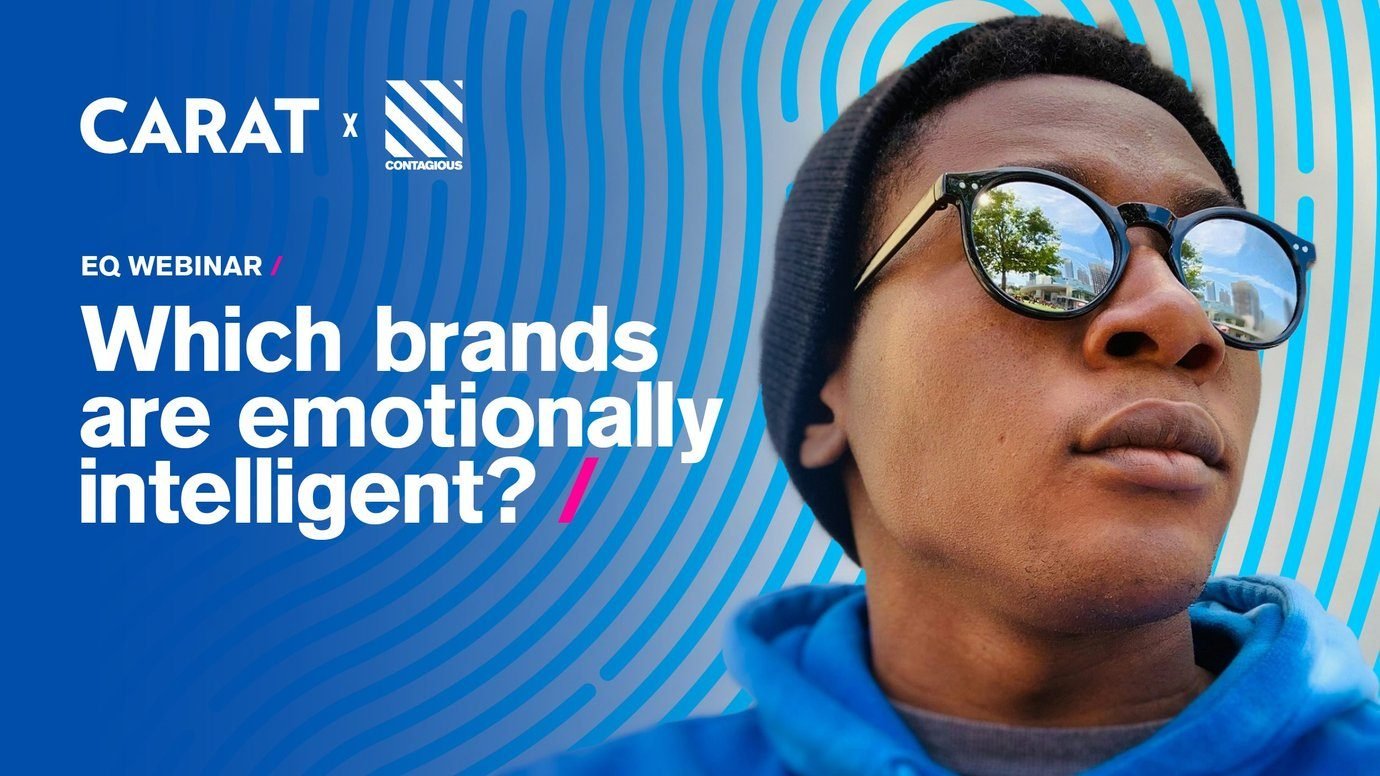Promoted content
Emotional intelligence and the cost-of-marketing crisis /
Carat strategists Sean Healy and Emma Saddleton explain how CMOs can gain a competitive edge by raising the emotional intelligence of their brands.

Amid the cost-of-living crisis, CMOs are facing their own cost-of-marketing crisis, according to a forthcoming report by Carat, and emotional intelligence (EQ) could be the key to resolving it.
During a free webinar hosted with Contagious on 12 December, Sean Healy, the global chief strategy officer for Carat, and Emma Saddleton, Carat’s global strategy director, shared some insights from the agency’s third EQ Report, which will be released early next year.Carat began investigating the idea that brands could be emotionally intelligent in 2019, inspired by the work of psychologist and author Daniel Goleman, who coined the term in 1996.
According to Goleman, there are five domains of emotional intelligence: self-awareness & understanding your own feelings, self-regulation, empathy & understanding the feelings of others, motivation and social skills (i.e. effective communication). Putting these domains to use into a skilled relationship builds your emotional intelligence.Carat took these components, created a set of questions that took the human qualities listed by Coleman and reframed them to apply to brands.
What the agency learned soon after conducting its research was that the brands with the highest EQ were often the most profitable. Carat also discovered that people tend to rate brands more highly when the latter are creating value and advocating for people.
When Carat first did its EQ research, the world was heading into pandemic lockdowns and brands were really advocating for people. ‘And guess what?’ said Healy, ‘we saw the [EQ] scores climb sharply’. But, he added, amid the cost-of-living crisis, people no longer feel brands are on their side as much as they did, and it shows in the EQ study.
Brands tend to score the lowest on self-regulation — which essentially means behaving with honesty & integrity — which is also the hardest metric to move with trust in brands notoriously hard to build. Comparing three years of EQ data, Saddleton said that what separated best and worst-performing brands the most over time was self-awareness and empathy. Interestingly, they saw brands at the bottom of the table tended to have longer purchase journeys, said Saddleton, and they tend to be more functional and have fewer interactions with customers. This was not however a blanket finding, meaning we can learn from those brands with longer purchase journeys and higher brand EQ.
After revealing Google and Disney had topped this year’s EQ Report, both with a score of 77%, Saddleton and Healy expanded on four trends from this year’s data. The first, explained by Healy, concerned tech brands. To the team’s surprise back in 2020 tech companies were often among the brands ranked highest for EQ. This has continued to be the case in subsequent studies. Healy believes that this is because people subconsciously equate humanity with things that help them to solve problems simply.‘So for us there's a real thing about being simple, reliable, adaptable, and also high touch,’ he said.
In terms of generational differences, millennials (defined as those aged 25-34) tended to score brands much more positively than Gen Z, said Saddleton, adding that it could be because the younger cohort have had a tough time, especially since the pandemic.The number of brands polarised to certain groups also increased - Tesla was the top-ranking brand for Gen Z, while millennials tended to favour familiar high-street brands, and those aged 35-plus gravitated towards more traditional brands. The EQ data also demonstrated the importance of end-to-end experiences, said Healy.
Being connected, holistic and thinking about brand conversion was ‘super important’, he said, adding that Carat’s client Netflix was a good example of a brand that combines being high touch with creating big cultural moments.
The final story was around integrating with and creating culture. The sports apparel brands Addas and Nike excel at this, but QSRs such as McDonald’s also do well in this by putting their biggest fans at the heart.
Concluding the webinar, Healy and Saddleton summed up the findings of the report into some practical advice for marketers.
They said that, according to Carat’s EQ data, being a high-touch brand and showing up regularly in people’s lives, being agile and responding to them as well as creating value for them and engaging with them, was invaluable.
They also said that the best-performing brands tended to be focused on the customer journey, and excelled at tailoring it both in the moment and over the long term.
‘Rewarding experiences are a great investment in future brand growth,’ said Healy. ‘So, from a cultural perspective, be meaningful at scale, and from a personal perspective, look to foster these rewarding relationships over time.’
He concluded: ‘We're convinced that if you follow some of our brand EQ principles, there's a really big opportunity to make the whole greater than the sum of the marketing parts — and use emotional intelligence to overcome the cost-of-marketing crisis.’
Watch the full talk here, and register to receive the full Brand EQ report in January 2024 here.
Want more of the same? /
We don’t just write about best-in-class campaigns, interviews and trends. Our Members also receive access to briefings, online training, webinars, live events and much more.




